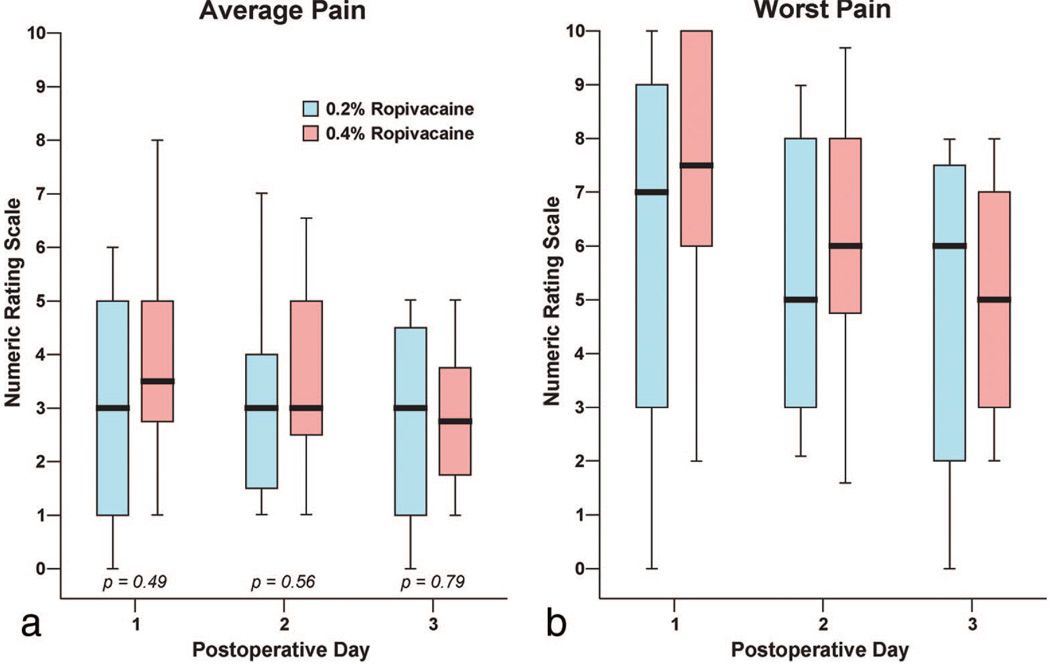Figure 1.
Effects of infraclavicular perineural ropivacaine concentration on postoperative pain after moderately-painful surgery distal to the elbow. Pain severity indicated using a Numeric Rating Scale (NRS) of 0–10, with 0 equal to no pain and 10 being the worst imaginable pain. Data are expressed as median (horizontal bar) with 25th–75th (box) and 10th–90th (whiskers) percentiles for patients randomly assigned to Group 0.2% (0.2% ropivacaine, 8 mL/h basal, 4 mL bolus) or Group 0.4% (0.4% ropivacaine, 4 mL/h basal, 2 mL bolus). Because each comparison dilutes all other P values, we restricted our analysis to four comparisons among secondary end points. P values are provided where statistical comparisons were applied.

